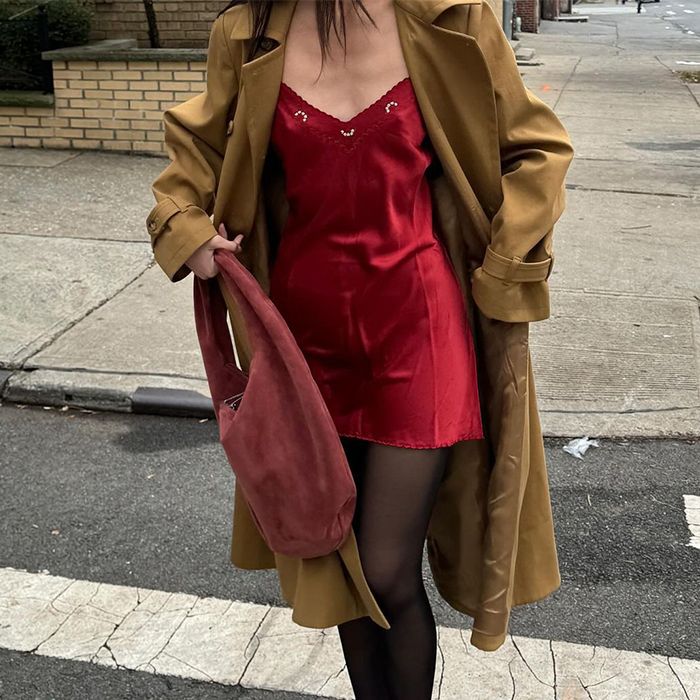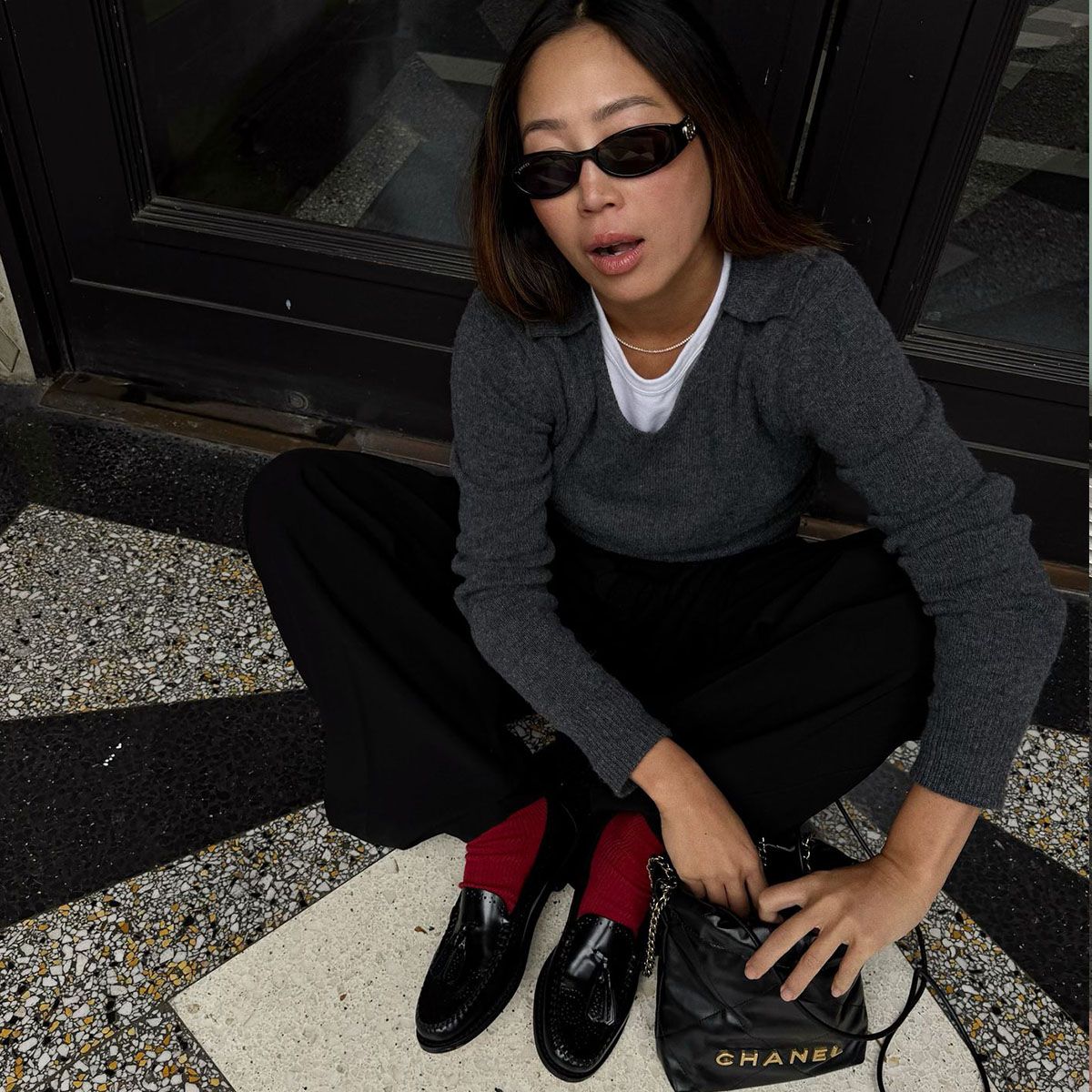This fall, barn jackets are everywhere. They’re storming the runways, flooding FYPs, and swarming local farmers markets — it seems like you can’t leave home without encountering or buying one. But trends (yes, even a classic one like this) don’t happen in a vacuum. From proclaiming your allegiance to your favorite pop girlie to ~donning~ a bold-colored trucker hat <<cough>>, clothing can — and typically does — carry a message. With roots in farm labor, barn jackets are steeped in history. Now, fashion houses, influencers, and even fast fashion retailers are unfurling their vision on it, quickly installing this utilitarian outerwear into its comeback era. But, given all the buzz, is something bigger afoot?
With so many outerwear options to consider, why are we all itching to hitch a ride on the latest trend tractor? Ahead, find out more about the background of the barn jacket and the significance of its current popularity.
Origin Story
Perhaps surprising to no one, the barn jacket originally functioned as a workaday garment. “The barn jacket, or its close cousin, the chore jacket, has been a staple of workwear since the early 20th century,” says Russell Bennett, fashion professor at Savannah College of Art & Design (SCAD). “The barn-style jacket appeared in both American and British contexts, albeit in slightly different forms. It was a staple garment designed for farmers, agricultural workers, or outdoor laborers — primarily men at that time — and was meant to be multifunctional, warm, and above all, waterproof.”
Sartorial siblings, the barn and chore jackets highly resembled one another, but were typically worn by different workers, though traditionally, not by women. “The chore jacket was for industrial work, so emphasized durability and practicality,” says Laura McLaws Helms, fashion and cultural historian. “Whereas the barn jacket was for outdoor agricultural work and therefore was made from waterproof materials (like waxed cotton) or featured heavier insulation.”
According to Sonya Abrego, design historian and author of Westernwear: Post-War American Fashion and Culture, the jacket was produced by brands like Carters, OshKosh, and Carhartt, which introduced their first barn coats in 1917. “They were designed as durable workwear for men, and you saw them worn and marketed to farmers and other agricultural laborers, railroad workers, construction workers, anyone who might need more protection on the job site,” she explains.
Over time, the jacket was claimed by the elite, ushering in waves of quiet luxury. The jacket has long been championed by “the British royal family and aristocrats, who quickly recognized the practicality in barn jackets. They adopted these jackets as wardrobe staples, publicizing them and elevating them to coveted items. The garments hint at wealth and status while remaining non-flashy,” says Bennett.
But, as if locked in a swanky two-step, while the jacket’s popularity rose among the British elite, it was also emerging as a symbol of rebellion, particularly in the U.S. “By the 1960s, barn jackets had become associated with an idea of a more authentic America,” says McLaws Helms. “Members of the counterculture started wearing them, along with other traditional workwear styles and army surplus, to signal their authenticity and dissent against the status quo, as well as their rejection of [luxury] fashion’s high cost.”
A Real Barn Burner
Barn Jackets on the Runway
Over the past several seasons, designers have reinterpreted the iconic and symbolic piece of outerwear. For Loewe’s Spring 2023 collection, trapeze coats modeled after a barn jacket injected a dash of femininity into the traditionally masculine staple (more on that in a sec).
And in Prada’s Spring 2024 collection, barn jackets wonderfully clashed with suited-up separates, which proposed a new consideration on what could be viewed as workwear and the type of labor — emotional, maternal, professional, or otherwise — that women conduct daily. “In February 2024, Prada sent out the barn jacket as a key item in its Fall 2024 runway show, giving it high fashion kudos,” says Emily Gordon-Smith, content director and sustainability lead at Stylus, a global trends intelligence company.
Later, for Alexander McQueen’s Fall 2024 collection, creative director Seán McGirr, unveiled a peplum-flouncing version of the jacket, which simultaneously called to mind its humble origins and its more contemporary high-brow adoption.
The fashion houses, seemingly, were in a race to catch up to the street trend that’d been spreading for several years before it first stepped back onto the runway. According to Gordon-Smith’s insights, OG brands like Carhartt have been revived by a new fleet of fans who perhaps read sneaker boards more than the local farmer’s almanac.
Workin’ 9-5
These days, it seems the barn jacket might be working harder than ever before. So, what’s actually driving this overall resurgence?
Generally, the experts pointed to an interest in functional clothing that’s versatile and uncomplicated. The world is arguably more chaotic than ever, which may suggest our interest in keeping things simple. Just look at the rise of trends like cottagecore and country, well, everything. “A [reason] for the appeal of a barn jacket (amongst others) is also that it signals a down-to-earth quality, a certain return to basics and the values those inherently have,” says Bennett.
The jacket once served as a stand-in for a willingness to go “back to the land,” says McLaws Helms. Perhaps, that sentiment is in its comeback era, too. Over the last several seasons, there’s been an emphasis on returning to your garden, stoop, yard, whatever, all while reminiscing on when produce wasn’t pumped full of chemicals and fast fashion didn’t clog landfills. “Nature is having such a massive influence on fashion and that is being played out in the popularity of this country life staple. But it’s also tapping an appetite for simple utility styling in our apparel, as well as for pragmatic and protective pieces that are weather-ready,” says Gordon-Smith.
But it doesn’t end there, necessarily. With its protective undertones and versatility, it could be argued that folks, whether intentional or completely subconscious, might be interested in reaching for a jacket that provides a feeling of security during these diabolical times. “I think there is a current sense of comfort that a well-proven functional garment makes us feel, especially in difficult and turbulent times,” said Bennett.
A jacket can serve as a type of armor. There’s a reason why motorcycle jackets, formerly worn by World War II soldiers, were appropriated by punks in the ‘70s. They can serve a myriad of functions from one person or community to the next. With so much at play currently, from the climate crisis to a woman’s right to choose to the possibility of mass deportations, it makes sense that collectively, though maybe unintentionally, we brought back a jacket that has weathered many political and cultural storms before. A coat that, no matter the conditions, was and is worn while we get down to work.



















 English (US) ·
English (US) ·